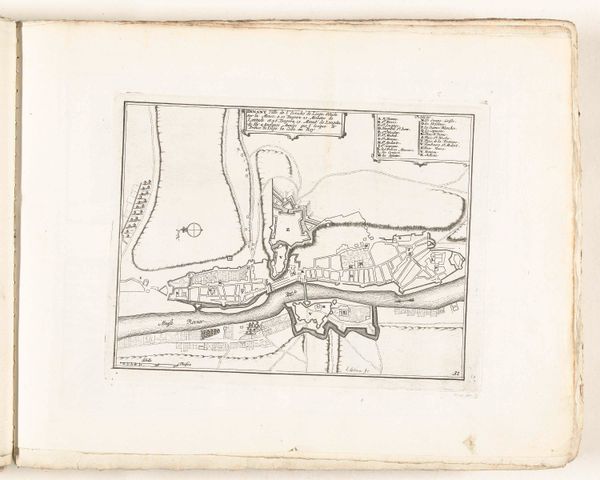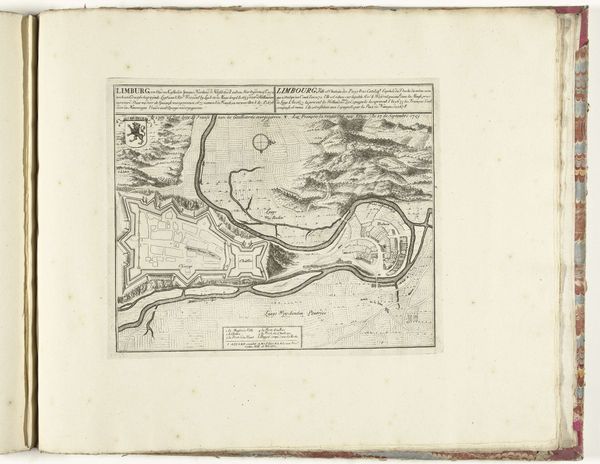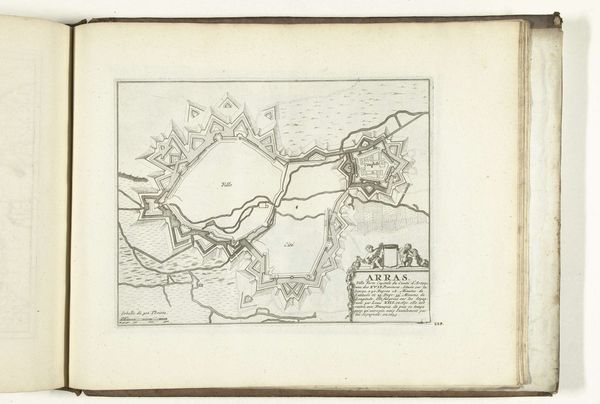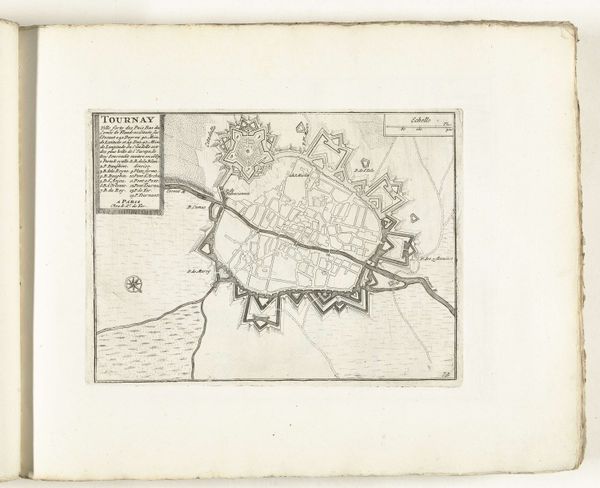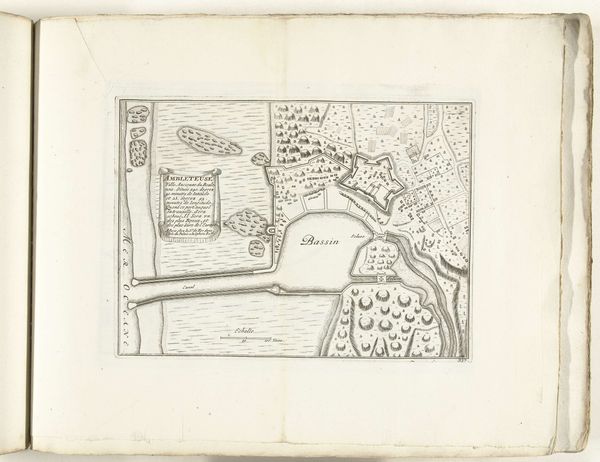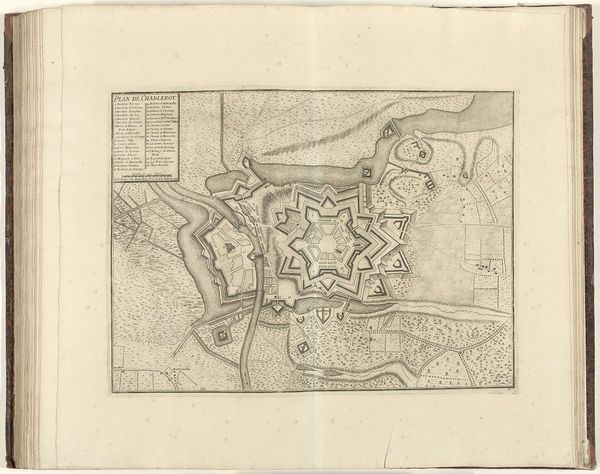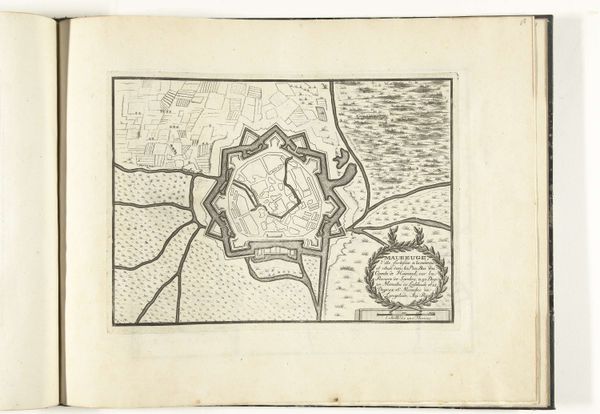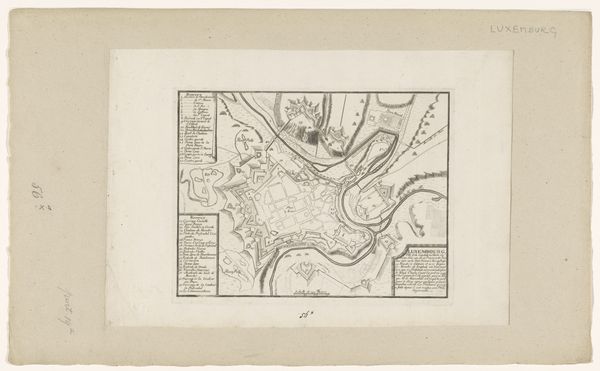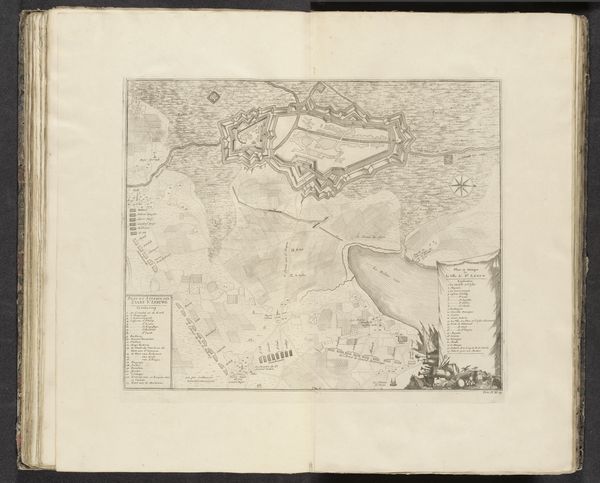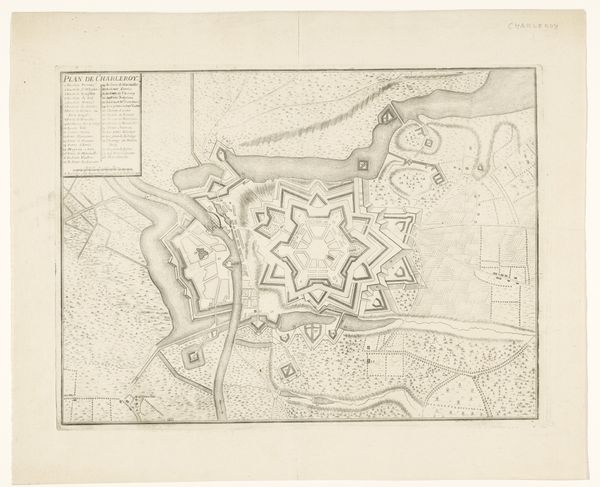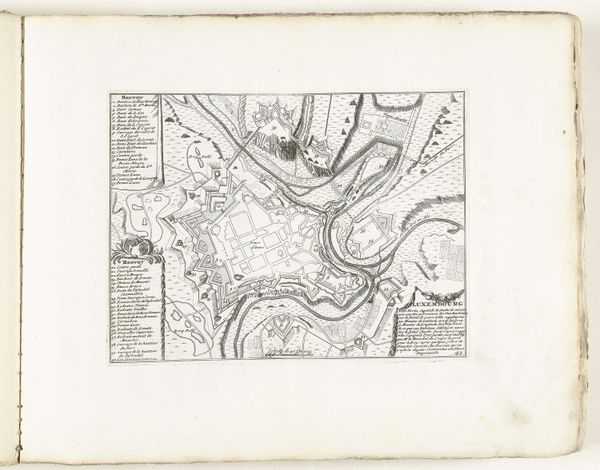
drawing, print, ink, engraving
#
drawing
#
baroque
# print
#
pen sketch
#
ink
#
geometric
#
line
#
cityscape
#
engraving
Dimensions: height 171 mm, width 250 mm
Copyright: Rijks Museum: Open Domain
This is an anonymous print from around 1702, depicting Maubeuge. It’s an engraving, made by cutting lines into a metal plate, inking the surface, and then pressing paper against it. Now, this may seem like a straightforward diagram, but let's consider the labor and materials involved. The engraver needed to be skilled, not just as a draughtsman, but in the specific techniques of metalworking. The quality of the lines, their precision and fineness, speaks to countless hours of practice. And the paper itself, likely handmade, adds another layer of material consideration. But why go to such lengths to depict a town? Well, Maubeuge was a strategically important fortified city. This print wasn’t just art; it was information, potentially valuable to military planners or rulers. The very act of creating and distributing such images was embedded in political and economic power. So, next time you see a print, remember it's not just an image. It's a testament to human skill, material knowledge, and the complex social contexts in which art is always made.
Comments
No comments
Be the first to comment and join the conversation on the ultimate creative platform.
